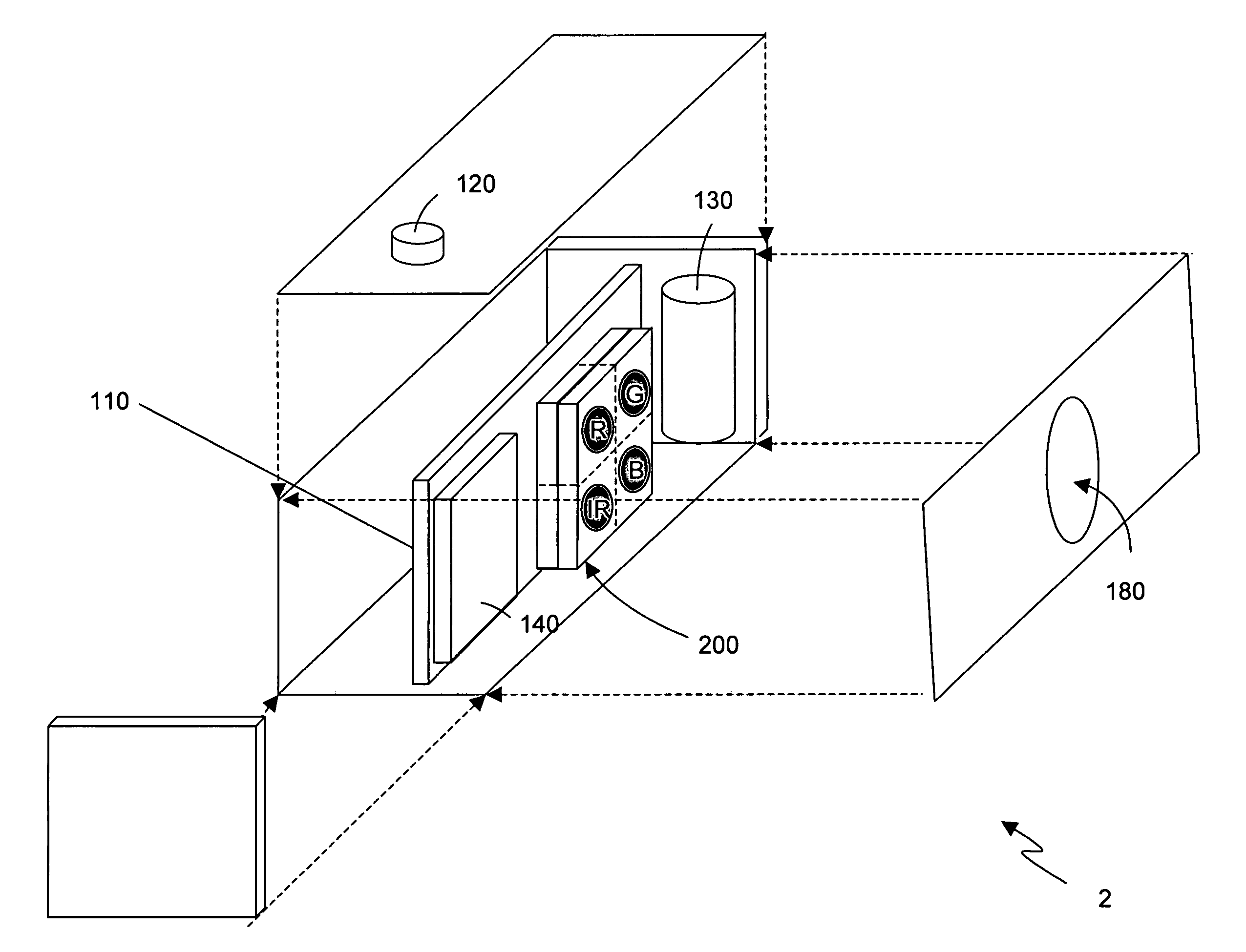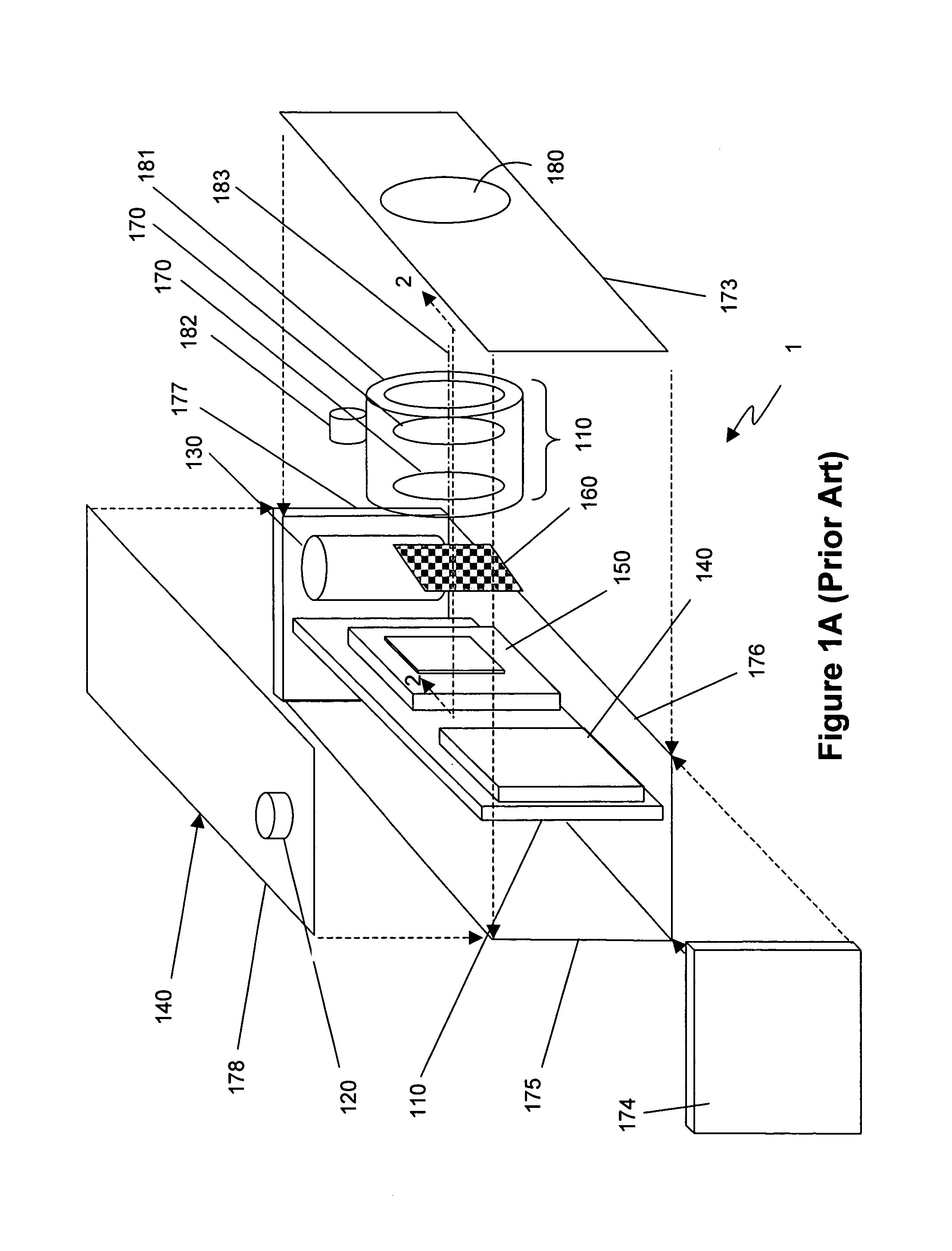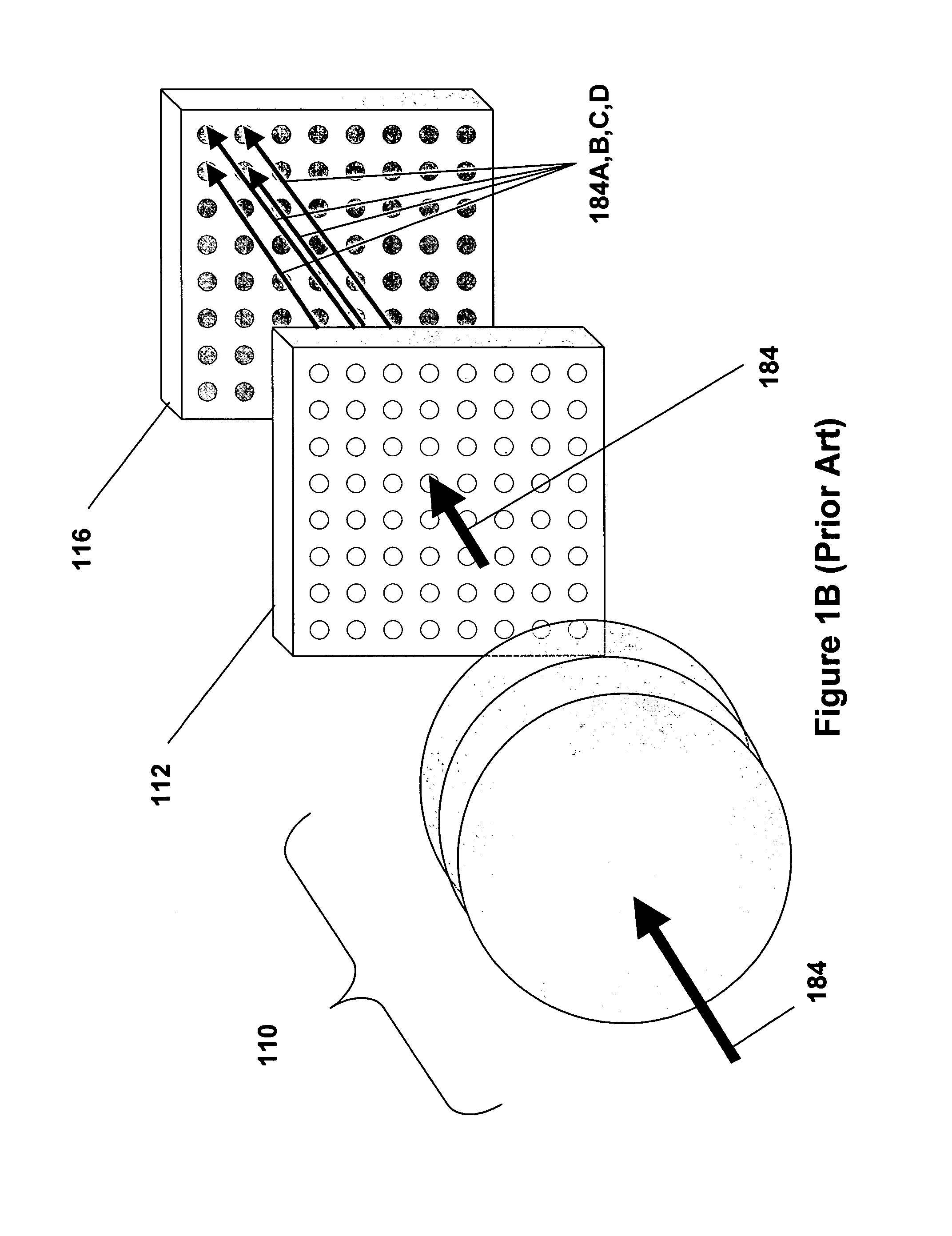Apparatus for multiple camera devices and method of operating same
a technology of multiple camera devices and apparatus, applied in the field of digital imaging, can solve the problems of negating the size advantage of electronic media, reducing the image quality, and difficulty in achieving the ever tightening demand of digital camera producers for smaller sizes, etc., and achieves the effects of high sensitivity, high resolution and enhanced imaging capability
- Summary
- Abstract
- Description
- Claims
- Application Information
AI Technical Summary
Benefits of technology
Problems solved by technology
Method used
Image
Examples
Embodiment Construction
[0312]In FIG. 1A a prior art digital camera 1 generally includes the primary image capturing elements of an image sensor 150, a color filter sheet 160 and a series of lenses 170 (in a lens assembly). Additional electronic components typically include a circuit board 110, a peripheral user interface electronics 120 (here represented as a shutter button, but could also include display, settings, controls, etc), power supply 130, and electronic image storage media 140
[0313]The digital camera 1 further includes a housing (including housing portions 173, 174, 175, 176, 177 and 178) and a shutter assembly (not shown), which controls an aperture 180 and passage of light into the digital camera 1. A mechanical frame 181 is used to hold the various parts of the lens assembly together. The lens assembly includes the lenses 170 and one or more electro-mechanical devices 182 to move the lenses 170 along an axis 183. The mechanical frame 181 and the one or more electro-mechanical devices 182 may...
PUM
 Login to View More
Login to View More Abstract
Description
Claims
Application Information
 Login to View More
Login to View More - R&D
- Intellectual Property
- Life Sciences
- Materials
- Tech Scout
- Unparalleled Data Quality
- Higher Quality Content
- 60% Fewer Hallucinations
Browse by: Latest US Patents, China's latest patents, Technical Efficacy Thesaurus, Application Domain, Technology Topic, Popular Technical Reports.
© 2025 PatSnap. All rights reserved.Legal|Privacy policy|Modern Slavery Act Transparency Statement|Sitemap|About US| Contact US: help@patsnap.com



